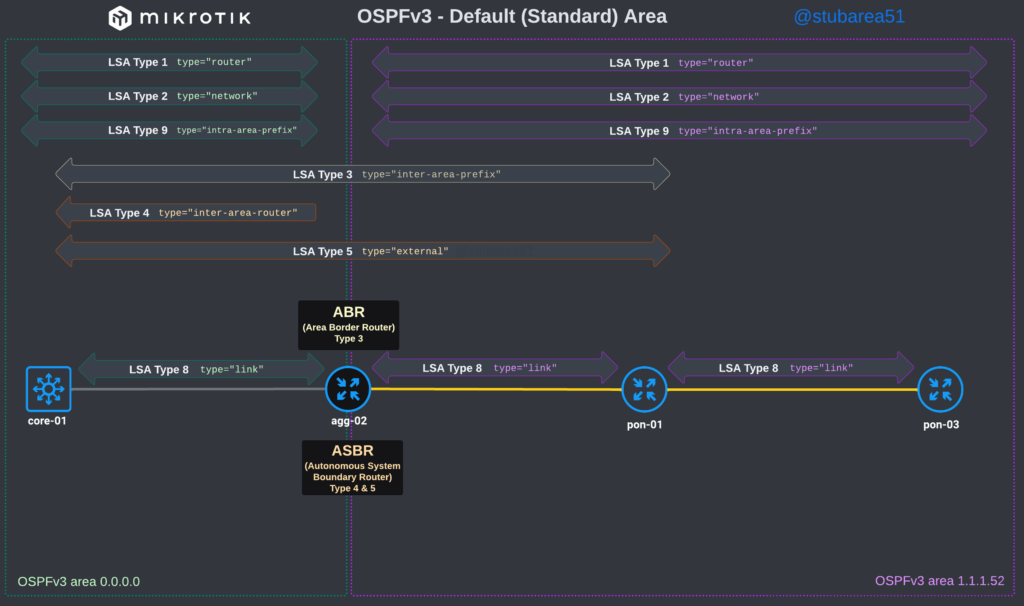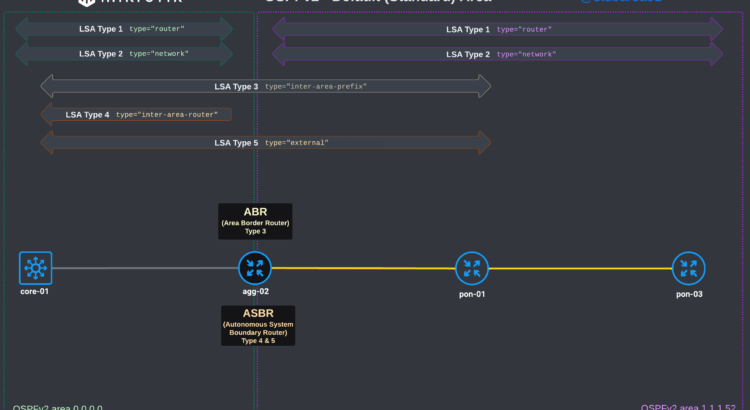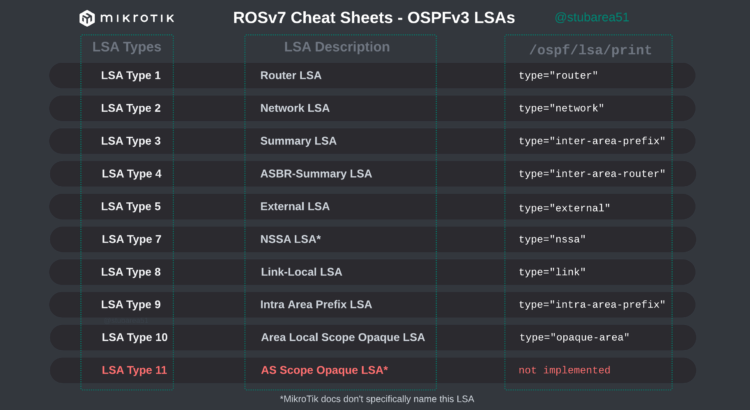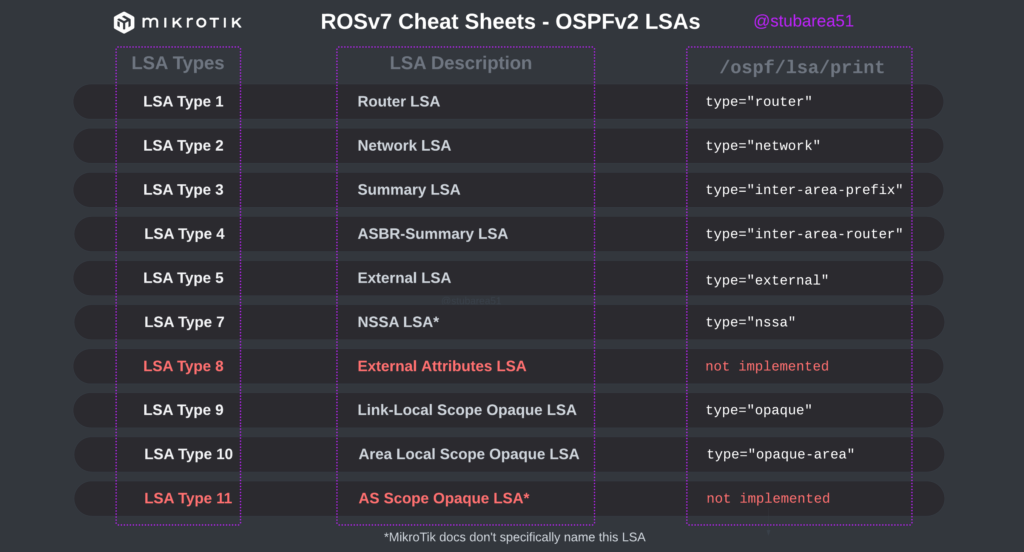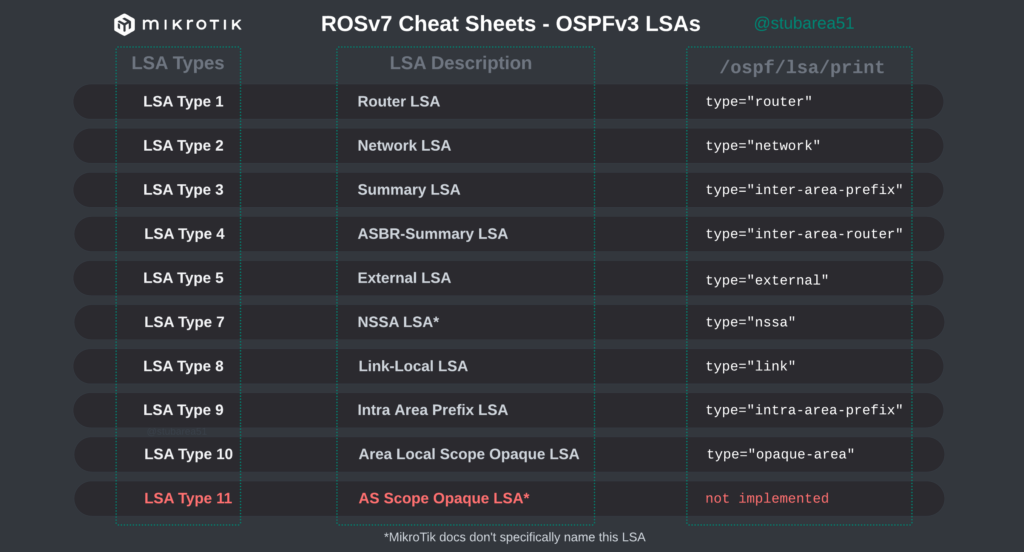When learning how to use OSPF with MikroTik, it can sometimes be difficult to understand how the different LSA types flow between areas.
In MikroTik’s OSPF documentation they briefly cover the LSA for OSPFv2 but don’t have OSPFv3 listed yet.
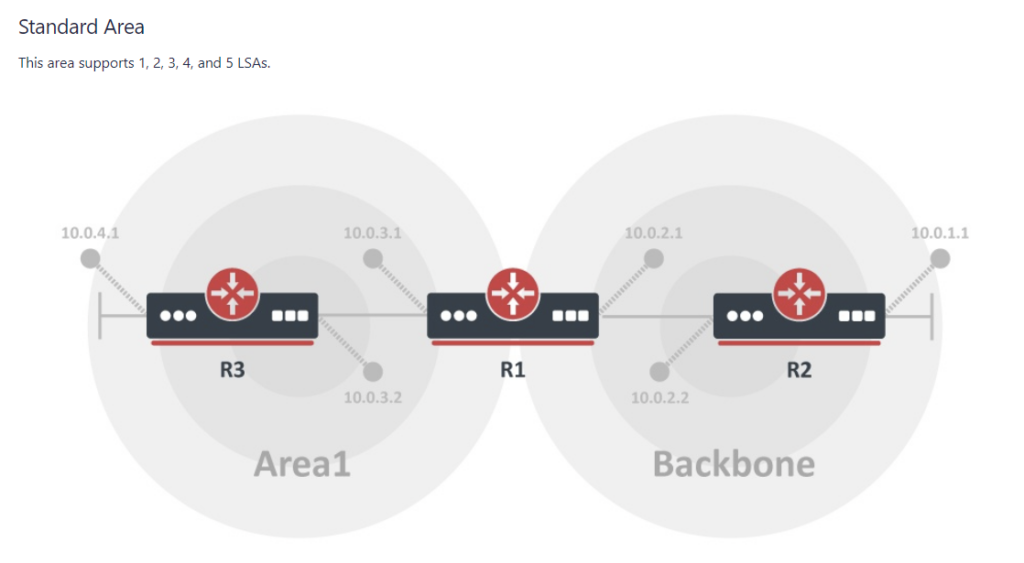
To better illustrate how the LSAs work, I created these graphical overviews for OSPFv2 and OSPFv3. When troubleshooting OSPF, it’s very helpful to understand which LSAs you should see in an area and how IPv4 and IPv6 differ.
Hope you find these helpful!
OSPFv2
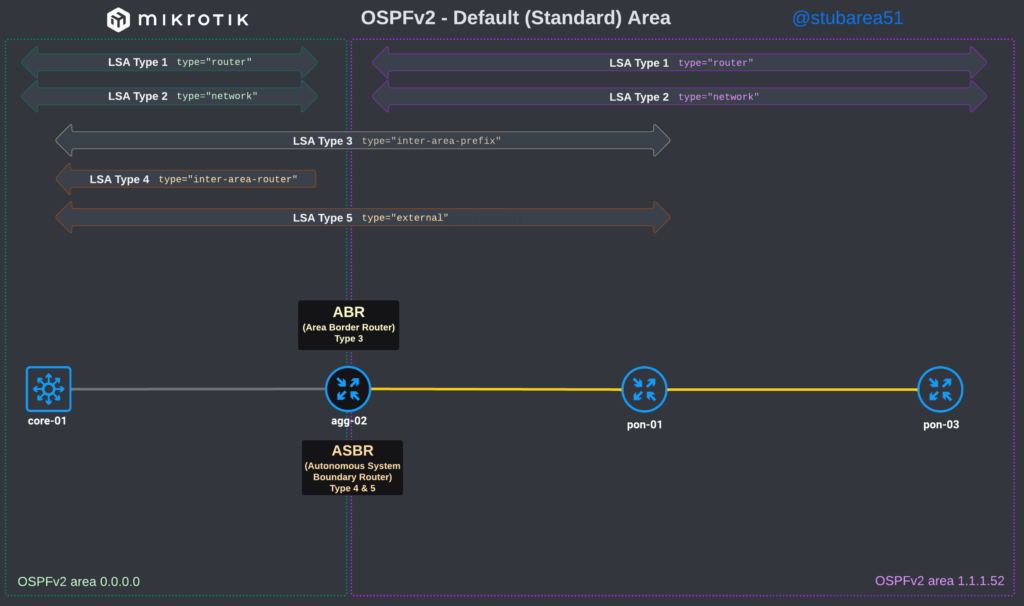
OSPFv3
